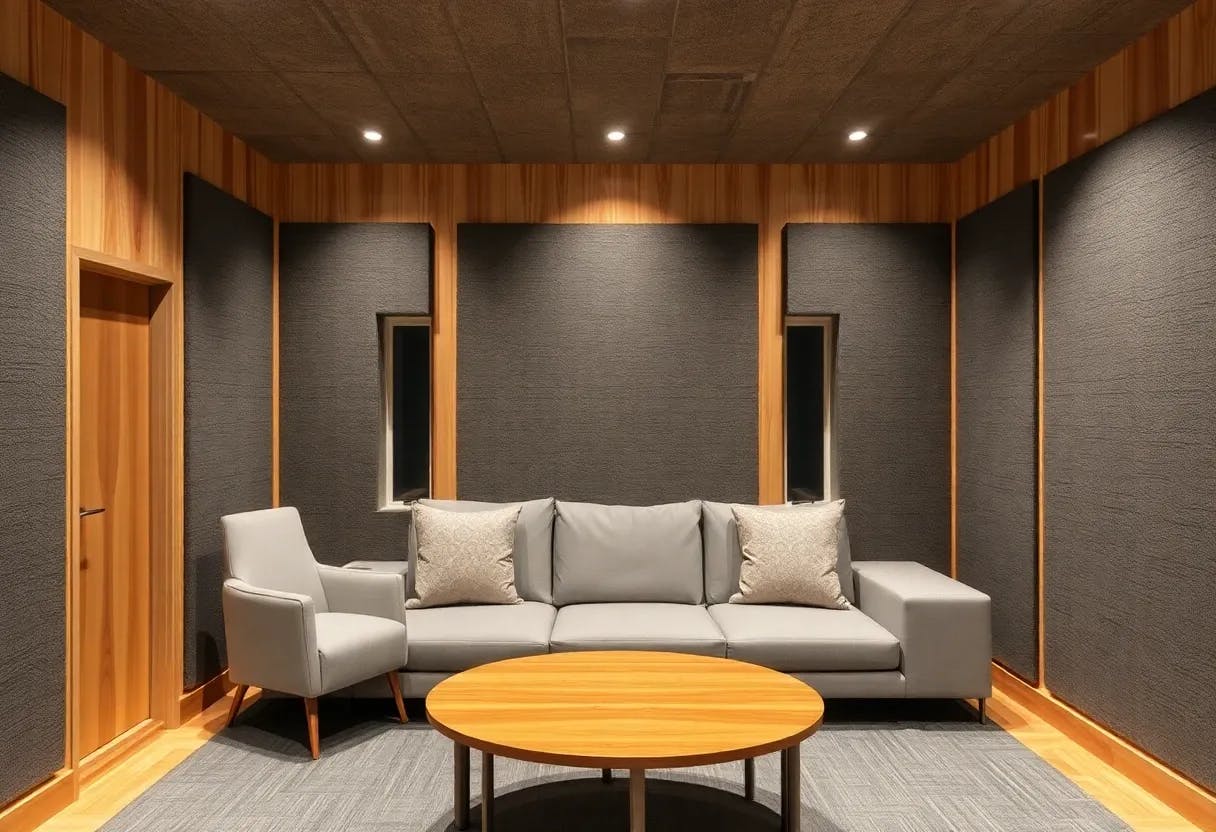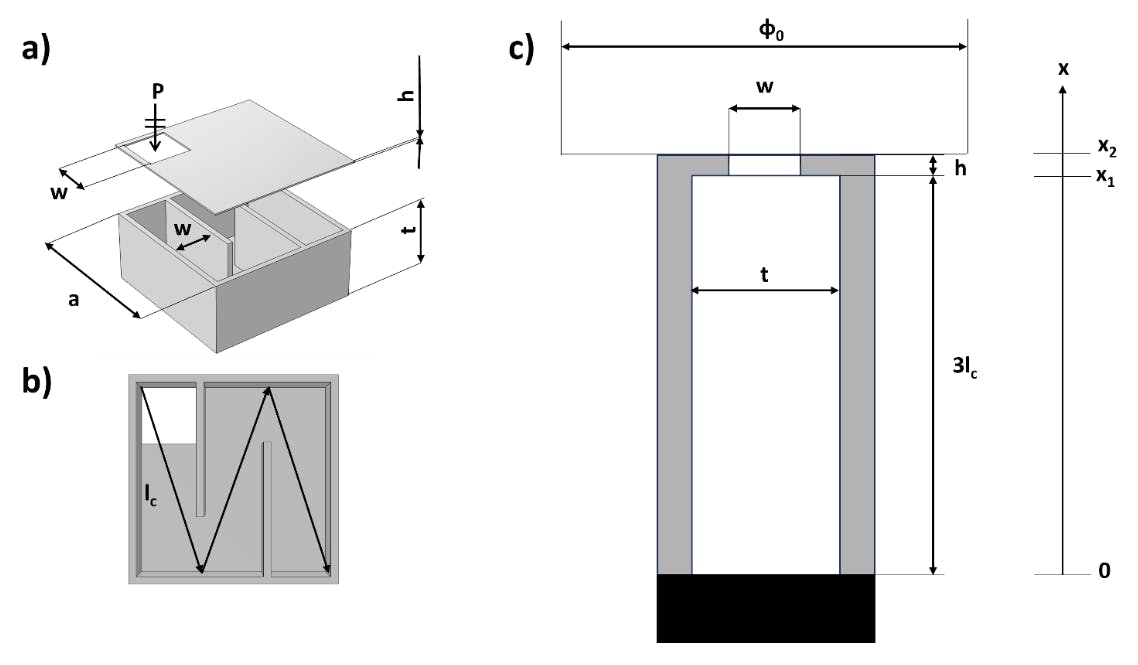Authors:
(1) F. Nistri, Department of Applied Science and Technology, Politecnico di Torino, Torino, Italy and Politecnico di Milano, Milano, Italy;
(2) V. H. Kamrul, Politecnico di Milano, Milano, Italy;
(3) L. Bettini, Politecnico di Milano, Milano, Italy;
(4) E. Musso, Politecnico di Milano, Milano, Italy;
(5) D. Piciucco, Politecnico di Milano, Milano, Italy;
(6) M. Zemello, Politecnico di Milano, Milano, Italy;
(7) A.S. Gliozzi, Department of Applied Science and Technology, Politecnico di Torino, Torino, Italy;
(8) A.O. Krushynska, Faculty of Science and Engineering, University of Groningen, Groningen, The Netherlands;
(9) N. M. Pugno, Laboratory for Bioinspired, Bionic, Nano, Meta Materials & Mechanic, University of Trento, Trento, Italy and School of Engineering and Materials Science, Queen Mary University of London, United Kingdom;
(10) L. Sangiuliano, Phononic Vibes s.r.l., Milano, Italy;
(11) L. Shtrepi, Department of Energy “Galileo Ferraris”, Politecnico di Torino, Torino, Italy;
(12) F. Bosia, Department of Applied Science and Technology, Politecnico di Torino, Torino, Italy and a Corresponding Author ([email protected]).
Table of Links
Abstract and 1 Introduction
2 Unit cell design and analysis
3 Unit cell experimental and numerical characterization
4 Rainbow AM labyrinthine panel
4.1 Panel design and fabrication
4.2 FE model of the AM panel
4.3 AM panel characterization
4.4 AM panel sound absorption results
5 Numerical evaluation of different labyrinthine sound absorption panel solutions
5.1 Macrocell with backing cavity
5.2 Results
Conclusions, Acknowledgements, and References
Appendix I
Abstract
In this work, we demonstrate in a proof of concept experiment the efficient noise absorption of a 3- D printed panel designed with appropriately arranged space-coiling labyrinthine acoustic elementary cells of various sizes. The labyrinthine unit cells are analytically and numerically analyzed to determine their absorption characteristics and then fabricated and experimentally tested in an impedance tube to verify the dependence of absorption characteristics on cell thickness and lateral size. The resonance frequency of the unit cell is seen to scale approximately linearly with respect to both thickness and lateral size in the considered range, enabling easy tunability of the working frequency. Using these data, a flat panel is designed and fabricated by arranging cells of different dimensions in a quasi-periodic lattice, exploiting the acoustic “rainbow” effect, i.e. superimposing the frequency response of the different cells to generate a wider absorption spectrum, covering the target frequency range, chosen between 800 and 1400 Hz. The panel is thinner and more lightweight compared to traditional sound absorbing solutions and designed in modular form, so as to be applicable to different geometries. The performance of the panel is experimentally validated in a small-scale reverberation room, and an absorption close to ideal values is demonstrated at the desired frequencies of operation. Thus, this work suggests a design procedure for noise-mitigation panel solutions and provides experimental proof of the versatility and effectiveness of labyrinthine metamaterials for tunable mid- to low-frequency sound attenuation.
1 Introduction
In recent years, Acoustic Metamaterials (AMs) have gained widespread attention because of their exceptional properties, which are not commonly found in naturally occurring materials [1–3]. AMs could potentially pave the way to the development of a new generation of acoustic absorbers and diffusers with deep-subwavelength thickness, that can be tailored for a desired frequency spectrum [4]. Their use brings new possibilities to the traditional problem of achieving low-frequency absorption [5]. In addition, AMs offer the possibility to achieve high performance in terms of noise reduction, and simultaneously reduced size and weight of structures [6], going beyond the limitations of conventional technologies based on single layer mass law, double layer resonance frequency tuning and porous absorber thickness optimization [7]. In particular, these new materials seem to be promising and to respond to the thickness and weight constraints imposed by the design/technological requirements of the market, e.g. in aircraft cabin design in aeronautics [8]. AMs can be combined with conventional solutions like porous materials [9], Helmholtz resonators [10] or tensioned membranes [11,12] for tuned or optimized performance. It is well known that perfect absorption can be obtained when a critical coupling condition occurs, whereby thermoviscous losses are exactly balanced by the energy leakage [13]. Such perfect absorption in a subwavelength regime has for example been shown to be achievable with periodic arrays of vertical Helmholtz resonators [14], as well as with plate-resonator/closed waveguide structures [15]. However, the working frequencies of these AMs are often quite narrow, or the structures need to be bulky to enable broadband operation. To address this problem, the concept of “rainbow trapping” in acoustic resonators with variable parameters, and hence working frequencies, [16,17] or systems with asymmetric porous absorbers [18] has been adopted so far.
A particularly interesting type of AM that has emerged in recent years are “labyrinthine” or “coiled” structures [19]. These are based on exploiting acoustic wave propagation in curved channels of subwavelength cross-section, giving rise to an extremely high effective refractive index (and thus to a decrease of the effective wave speed) and the possibility of achieving “double negativity”, i.e. simultaneously negative effective density and bulk modulus, or conical dispersion [20]. Tapered 2- D labyrinthine designs have also been shown to achieve optimal broadband impedance matching, which is fundamental for efficient absorption [21]. The concept has also been extended from 2-D to 3-D space coiling labyrinthine structures [22]. Experimental demonstrations of the theoretically predicted broadband negative refractive index have been achieved through reflection or transmission measurements and two-dimensional prism-based measurements on 3-D printed thermoplastic labyrinthine samples [23]. Hilbert-like fractal acoustic metamaterials have also been designed, fabricated via 3-D printing, and experimentally characterized, to achieve efficient low-frequency acoustic wave attenuation [24,25]. 3-D “one-port” labyrinthine structures have also been proposed to achieve high-levels of sound absorption over large frequency ranges (and for various incidence angles), exploiting different channel lengths to tune the operating bands [26]. Another example of labyrinthine AM providing large tunability are spider-web inspired structures, in which the addition of edge cavities can further enhance the possibilities to manipulate dispersion properties, control the appearance of band gaps or negative group velocity, and tailor transmission/reflection characteristics [27]. Several studies have shown that the use of space filling structures, such as Wunderlich curves, can efficiently control transmission, reflection and absorption by varying channel tortuosity, so that total broadband reflection/absorption can be achieved e.g. by tuning the channel length [28,29].
Thus, labyrinthine and space-filling AMs have provided a very convenient and efficient way to achieve sound control in large frequency ranges, especially in the subwavelength regime, by tuning geometrical design parameters (e.g., channel tortuosity or elongation and cavity size). This kind of adaptability could largely benefit noise absorption applications at small to medium scale, where restrictions on structural size of the absorbers impose trade-offs between efficiency and encumbrance. Sufficiently thick conventional acoustic absorbing materials, such as glass wool or foams within sandwich panels with an average density of 75 kg/m3 [30] can absorb acoustic wave energy in wide frequency ranges, but their bulky characteristics limit their broad application for low frequency absorption. Moreover, lightweight characteristics become crucial when dealing with devices in the aerospace and automotive industry or other technological domains [8]. At present, few studies [31] in the literature have presented detailed acoustic characterization studies on large structures such as metamaterial-based panels, and none on labyrinthine ones, to the best of our knowledge. Further, the need emerges to investigate labyrinthine AM performance on structures that are closer to potential operating conditions, i.e. in diffuse field conditions.
With this in mind, the present study investigates the design of coiled labyrinthine acoustic resonators, their appropriate combination in a 3-D printed “rainbow” panel and presents a proof-of-concept experiment to demonstrate efficient broadband noise absorption. The paper describes the following workflow. Design of labyrinthine Unit Cells (UCs) and analytical model of their absorption spectra is described in Section 2.Experimental and numerical characterization and comparison with the analytical model for the designed UC is provided in Section 3. Design and 3-D printing of a full-scale panel with variable, appropriately chosen constituent UC dimensions, its numerical model and experimental test in a reverberation room is described in Section 4. Finally, a numerical investigation of a coupling of the panel with conventional absorbing material is described in Section 5.










